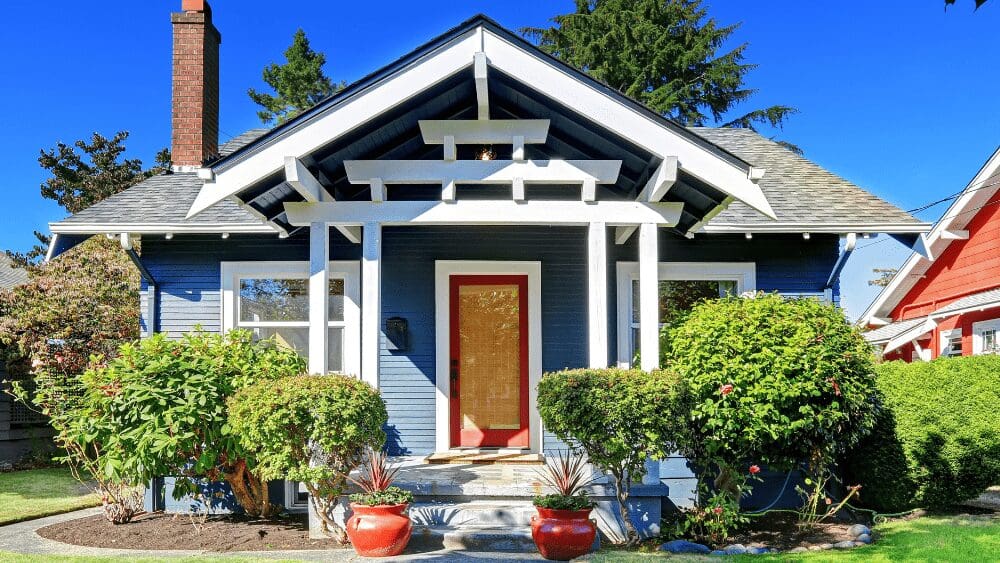Whether you’re refreshing a small bedroom in a Seattle, WA home or tackling the exterior of a house in Charlotte, NC, knowing how much paint to buy can save you time, money, and hassle. This Redfin article gathers expert tips from painters, designers, and renovators to help you estimate correctly, avoid costly mistakes, and ensure a smooth, flawless finish.

1. Measure smart and plan for extras
“When estimating paint, accuracy matters—especially for a high-end result,” explains C & J Painting. “Measure your wall height by width to get square footage, and always plan for two coats. Add 10–15% extra for touch-ups or batch consistency, especially on large jobs where sheen or color can vary.”
Renovating your home?
Find out what your home's worth, edit facts, and see the impact of home projects.
2. Understand how paint spreads on different surfaces
Renovating your home?
Find out what your home's worth, edit facts, and see the impact of home projects.
“To calculate how much paint you need, add up wall square footage and subtract non-painted areas like doors and windows,” says The Cande Shop. “But don’t forget—surfaces like brick, stucco, or unprimed drywall will absorb more. These areas often need up to 50% more paint than smooth walls.”
3. Include ceilings, trim, and odd spots in your math
“Textured walls, dark-to-light transitions, or new drywall can all boost paint usage by 20–30%,” explains Kerala Home Designs. “But people often forget about ceilings, trim, or odd architectural nooks. Be sure to include those to avoid a last-minute paint run.”
4. Going bold? You’ll likely need more paint
“One gallon usually covers 350 to 400 square feet, but that changes fast with deep or bold colors,” says MaryGilbert. “Dark shades often need an extra coat or two to get solid coverage. Always grab an extra can if you’re painting with rich hues—you’ll avoid patchiness later.”
5. Use visualization tools to map paint plans
“Room size, number of coats, and texture all play a role in estimating paint,” explains Roomvo. “Before you buy, use a visualizer tool to test color and layout. Seeing your project ahead of time helps reduce overbuying and improves color confidence.”
6. Cheap paint isn’t always a bargain
“Coverage per gallon can vary wildly,” says Old Village Paint. “High-end paint may cover in two coats, while a lower-end brand could take four or five. That adds cost in the long run. Invest in quality, and always keep a labeled jar of leftover paint for touch-ups.”

7. Plan for maintenance, not just the moment
“I always advise planning for two coats and just a bit extra,” says Merritt Design Co.. “Touch-ups are easier when you have leftover paint, and it’s better than trying to match color later. Think of it as maintenance insurance.”
8. Don’t forget primer and wall prep
“Start with square footage, then double it for two coats,” says Lacie Grace Interiors. “But also ask: does the wall need a primer? Are there repaired spots? These affect how much paint you’ll use. Prep right, and you’ll waste less in the long run.”
9. Use rule-of-thumb estimates for quick planning
“A quick way to plan is 1 gallon for a bathroom, 2 for a bedroom, and 3 for a large common area,” explains Chicago Painters. “If you’re painting multiple bathrooms, use one color to save on leftovers. Modern tinting tech makes it easier than ever to re-up if needed.”
10. Furniture painting needs less—but good prep matters
“When painting furniture, a pint can cover a dresser or two nightstands,” says Vintage Sweetheart Designs. “The key is surface prep. If it’s sealed or previously painted, sand it down first or the paint won’t stick evenly, and you’ll end up using more.”
11. Round up for textured or uneven walls
“To estimate paint for textured areas, calculate square footage and add 10–20%,” explains Metro Painting Brisbane. “Textured walls, wood paneling, and porous materials soak up more paint. Rounding up helps ensure full coverage without multiple trips.”
12. Let your space breathe with varied coverage
“I treat wall painting like arranging art—some get full coverage, others stay light,” says Lucy Clare Spooner. “Not every wall needs to be bold. Lighter tones or fewer coats in low-traffic zones can conserve paint and still look polished.”
Looking to save money on your mortgage?
Reduce your monthly payments by refinancing now.
13. Don’t ignore the biggest mistake: underbuying
“To start, calculate square footage and factor in coats and wall type,” says Pro Painters. “But the most common mistake? Not buying enough. Falling short mid-project affects color continuity. Always buy a little more—your finish will thank you.”



















 English (US) ·
English (US) ·